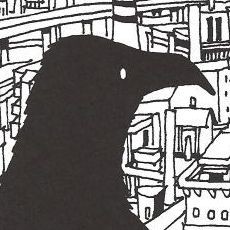Something about the transience of adolescence never fails to inspire. More often than not we wake up, 20, fully grown, and confused as to how we got there. For this reason, mangaka like Kamio Youko are a particularly rare breed. Time and time again, she manages to lushly recreate both the frame of mind and the emotional state of adolescence for her readers. Matsuri Special, her latest manga in a successful career is no exception.
Matsuri Special is, often unrelentingly, a shoujo manga. The character relationships are complex, and often too fluid to keep straight. It saves itself from the trappings of other shoujo manga by showing none of the indulgence seen in this genre: Matsuri Special is human in scale, and humble in telling.
Matsuri is fifteen and irate. She wants nothing more than to sink into the fabric of her class and sneak glances at the boy she likes. Unbeknownst to her classmates, she returns home daily to her father’s pro wrestling gym, donning a mask and a mid-drift bearing sailor uniform as the masked wrestler “Honey Princess”. Like any other teenage girl she does everything in her power to conform, but is still pegged as “muscle girl” at school by her classmates, due to the wrestler’s physique she is unable to hide. Though a talented wrestler, she longs for greener pastures; envious of her classmates who sing karaoke after class and go on dates. The manga begins with fellow classmate, and pro wrestling otaku Shigematsu Arata discovering her secret, and joining her father’s gym, much to Matsuri’s disdain.
Adolescence is contradictory, uncomfortable, and occasionally unbearable, yet its brilliance is impossible to recreate. From a sign reading “Matsuri changing, come in and I’ll kill you”, to Arata’s tiny apartment covered in posters of Honey Princess, Matsuri Special is filled with hints at the things its cast is too shy, too proud or too afraid to say, but can’t bear not to communicate.

Leave a Reply